Affiliate disclosure: This post may contain affiliate links. Please see our Privacy Policy.
Herbal infused oils are one of the most practical and beginner-friendly herbal remedies you can make at home. Whether you’re making salves, massage oils, bath scrubs, or simply treating a patch of irritated skin, herbal oils let you capture the healing benefits of plants in a form that’s shelf-stable and easy to use.
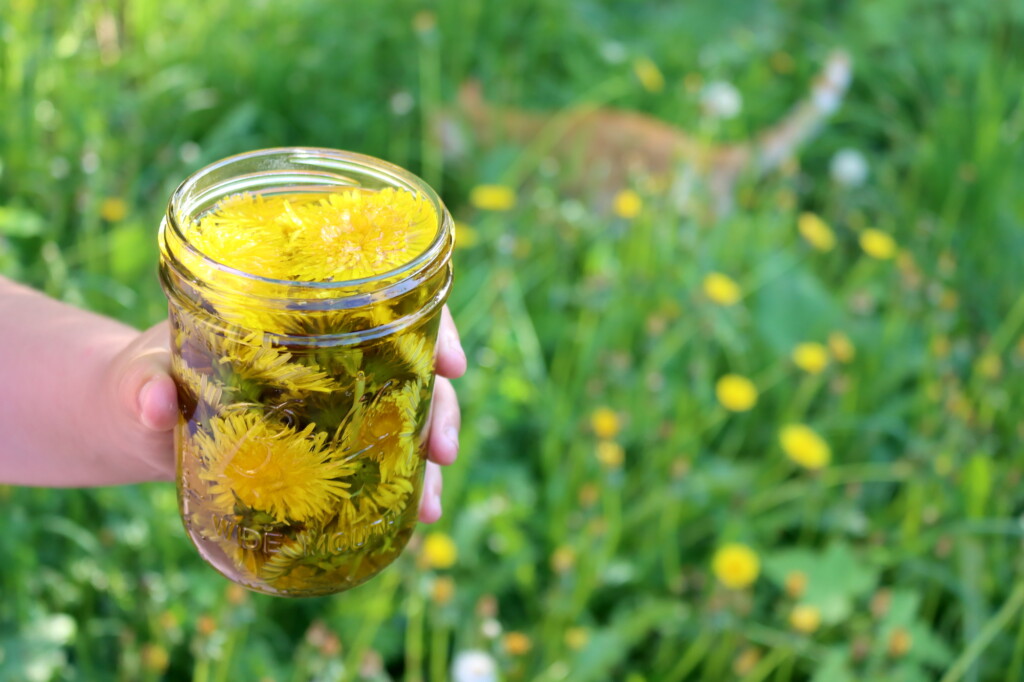
Table of Contents
- What Are Herbal Infused Oils?
- Choosing Herbs for Oil Infusions
- Choosing a Carrier Oil
- How to Make Herbal Infused Oil (Using Dried Herbs)
- How to Infuse Fresh Herbs in Oil (Safely)
- Why You Can’t Cold Infuse Fresh Herbs in Oil
- Shelf Life and Storage
- Using Herbal Infused Oils
- Herbal Infused Oil Recipe
- Frequently Asked Questions
While teas extract herbal compounds in water for internal use, oils draw out fat-soluble constituents for external applications. That includes soothing, anti-inflammatory, antimicrobial, and analgesic compounds—depending on the herb you choose. In my house, we keep a few herbal oils on hand year-round, and I find myself reaching for calendula jojoba oil for just about everything from chapped skin to bug bites.
In this guide, I’ll walk you through how to make herbal infused oils using both dried and fresh herbs, explain when and why to use heat, and help you choose the best herbs and carrier oils for your needs.
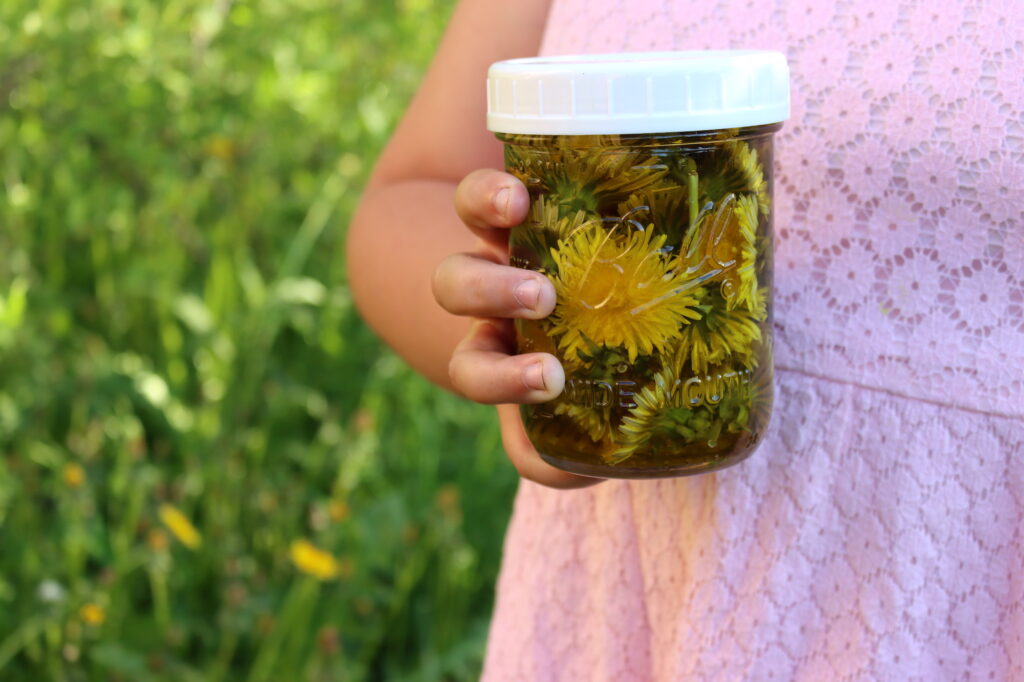
What Are Herbal Infused Oils?
Herbal infused oils are made by soaking herbs in a carrier oil to extract their beneficial compounds. They’re used topically to treat a variety of conditions, depending on the herb—everything from sore muscles and dry skin to minor wounds and inflammation.
You can use infused oils as-is or turn them into salves, creams, lotions, or bath oils. Some (made with culinary herbs and dried ingredients) can even be used in cooking—but only when properly prepared and stored.
For medicinal preparations, however, infused oils are almost always used externally.
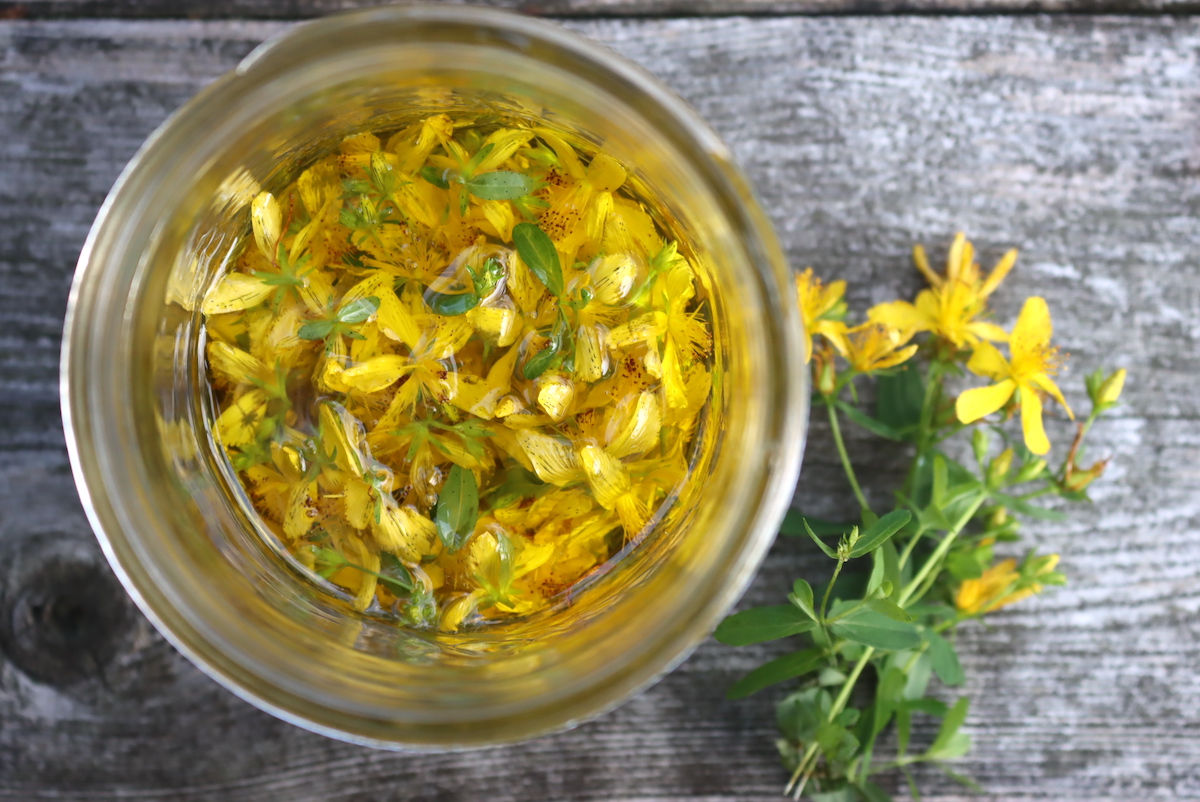
Choosing Herbs for Oil Infusions
The best herbs for infused oils are those with beneficial compounds that dissolve readily in oil. Here are a few popular options and how I use them:
Arnica Flowers – This makes a great massage oil and sore muscle salve. I use an arnica infused oil in my massage practice for clients that have seriously overdone it and need some targeted muscular relief.
Calendula Flowers – Calendula is great for skin irritations. We keep calendula infused oil in a tincture dropper bottle in our medicine cabinet for spot treatment of skin irritation. It’s suitable for sensitive skin, and it’s even used in holistic diaper rash creams for infants.
Comfrey – Used externally to help wounds heal. It’s so effective that herbalists warn not to use it for puncture wounds or the surface will heal too fast, not allowing the deeper puncture to heal properly.
Lavender – Cooling and calming, lavender is great for use as a bath oil. It’s also naturally antimicrobial. I infuse olive oil with lavender and then mix it with coarse sugar to use as an exfoliating bath scrub.
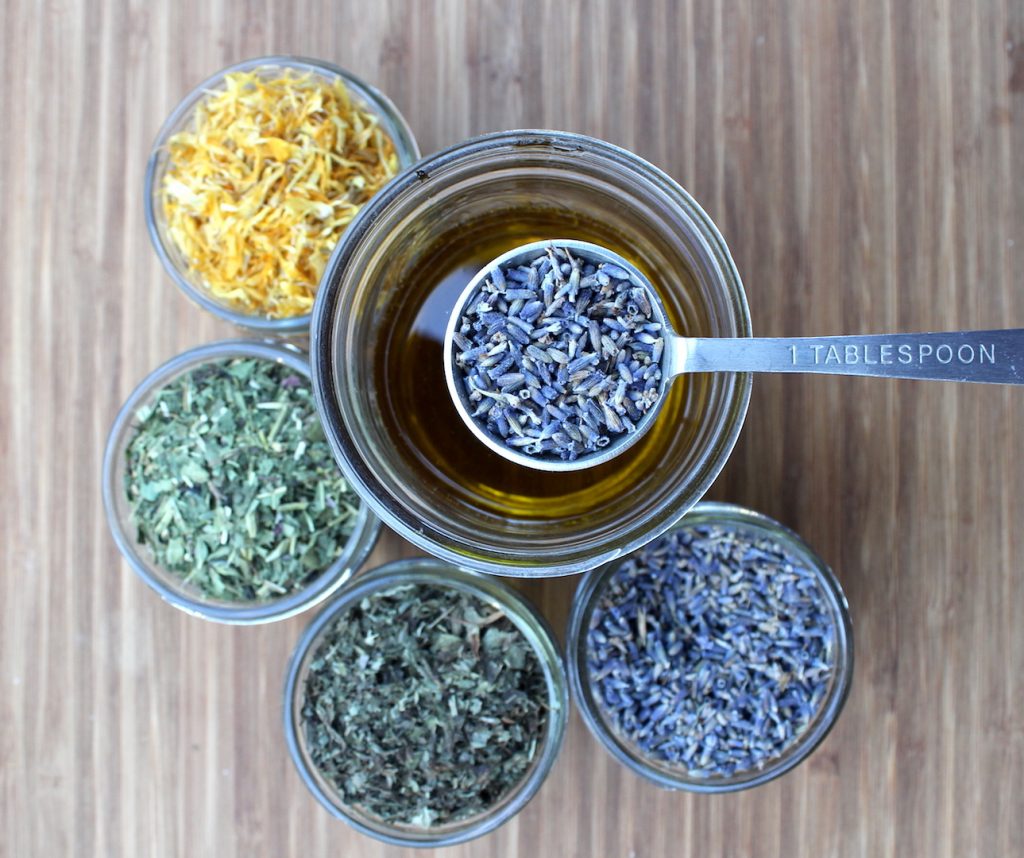
Lemon Balm – Has a cooling and calming effect on the skin. It’s topical effects on the skin are similar to its effects taking internally as a tea for calming the whole body.
Mullein – Generally used as an oil, and a great thing to keep around in a tincture dropper bottle for ear infections. We use mullein and garlic oil and it clears things right up.
Plantain – This herb is well known for it’s ability to work as a natural bandage for wound healing. Adding it to salves and healing oils is a great way to make use of it’s medicine.
Rosemary – This is one of those herbs that is both tasty and medicinal. If you infuse rosemary into olive oil it makes great rosemary roasted potatoes.
The rosemary oil also works to treat nausea and stomach upset internally. Topically, rosemary infused oil is great for dandruff and dry scalp. Wonderful for use in the kitchen and in the medicine cabinet!
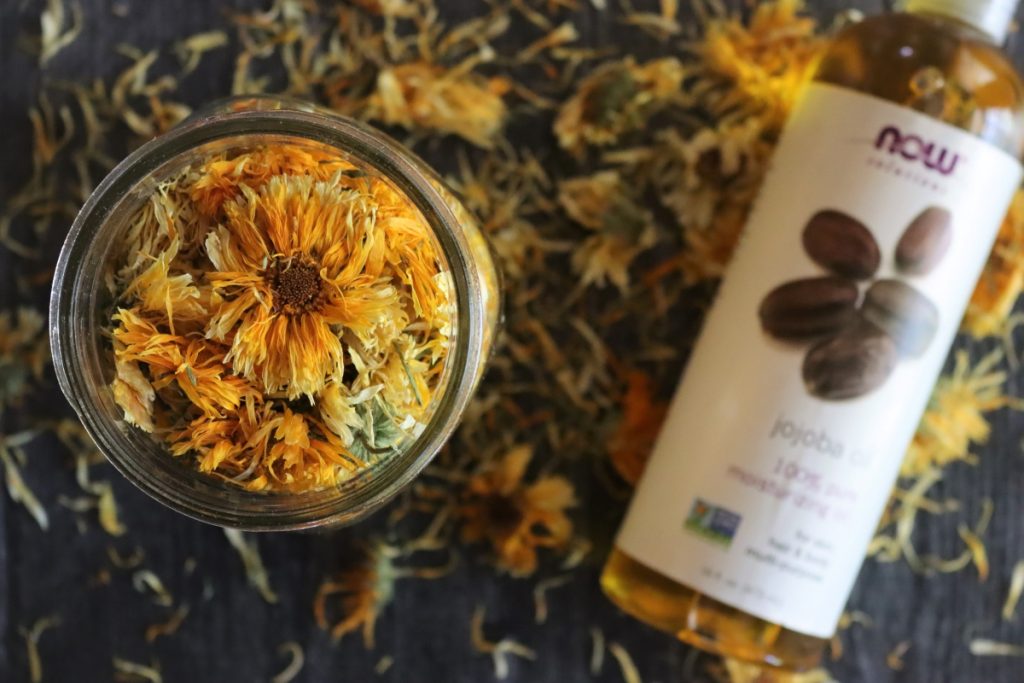
Choosing a Carrier Oil
You’ll also need a carrier oil. The best choice depends on how you plan to use the final product:
- Olive oil – A great all-purpose oil with a long shelf life. Best for salves and massage oils.
- Jojoba oil – My favorite oil and I used it for years as a professional massage therapist. It mimics the skin’s natural oils and is great for facial oils and acne-prone skin.
- Grapeseed oil – Lightweight and absorbs quickly. Good for bath oils and lotions.
- Coconut oil – Solid at room temp, but melts on skin. Naturally antimicrobial.
Be sure to choose a fresh, high-quality oil that hasn’t gone rancid.
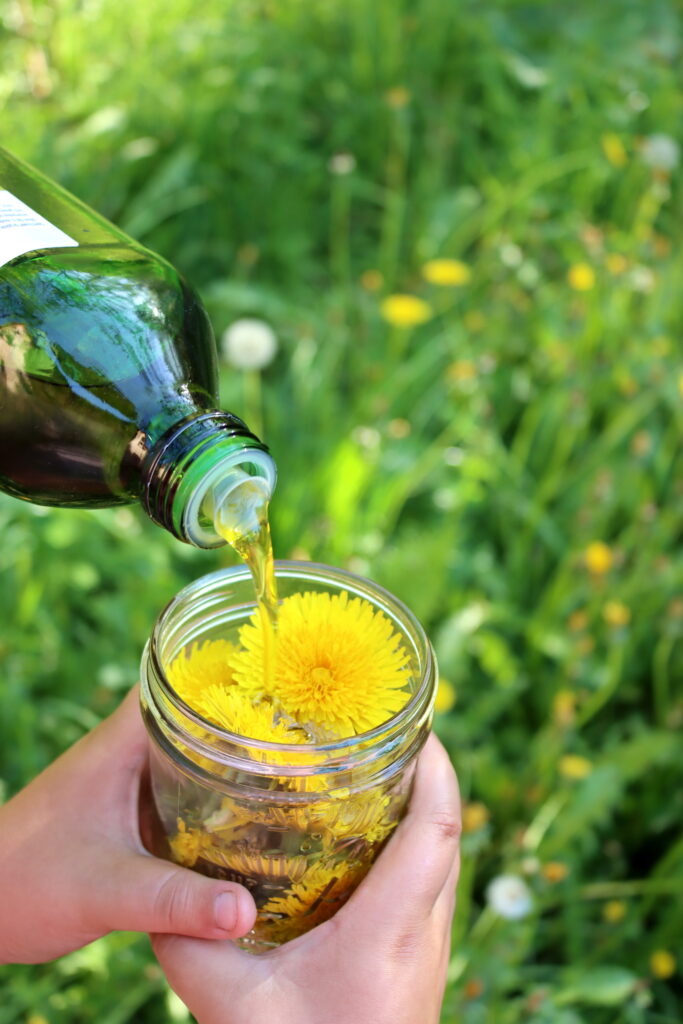
How to Make Herbal Infused Oil (Using Dried Herbs)
Start by filling a clean, dry jar about 2/3 full with your chosen dried herbs. You can chop or crush the herbs slightly to expose more surface area. Pour in enough oil to completely cover the herbs by at least an inch, leaving some headspace to allow for swelling.
Cap the jar tightly, label it with the contents and date, and choose your infusion method:
Traditional Method (No Heat): Place the jar in a warm spot out of direct sun and let it infuse for 3 to 6 weeks, shaking daily.
Gentle Heat Method (My Favorite): Place the jar in a yogurt maker, Instant Pot on the yogurt setting, food dehydrator with the trays removed or a warm water bath (around 100 to 110°F) for 24 to 48 hours.
Quick Heat Method: When you’re in a hurry, infuse at 120°F for 4 to 6 hours. Use a double boiler or slow cooker and monitor the temperature closely. This method isn’t ideal, but it’ll work if you really need something ASAP.
After infusion, strain the oil through cheesecloth or a fine mesh strainer, squeezing out as much oil as possible. Store in a tightly sealed jar in a cool, dark place for up to one year.
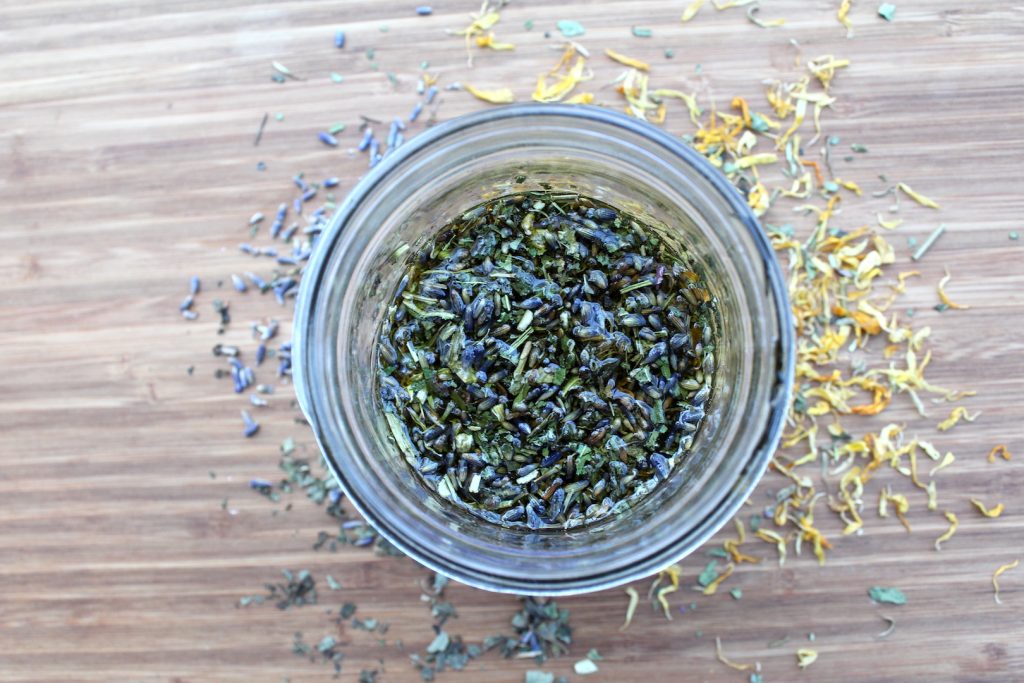
How to Infuse Fresh Herbs in Oil (Safely)
Fresh herbs can be used for infused oils—but they require extra care due to their high water content. Moisture in the herbs can cause the oil to spoil, mold, or even grow botulism toxin under the right (or wrong) conditions.
Always use heat when infusing fresh herbs. The gentle heat drives off moisture and prevents spoilage. Do not attempt to cold infuse fresh herbs at room temperature.
To make a fresh herb infused oil:
- Roughly chop freshly harvested herbs and allow them to wilt for 12-24 hours to reduce surface moisture.
- Pack the herbs loosely into a clean, dry jar.
- Cover with oil and place in a yogurt maker, Instant Pot on the yogurt setting, food dehydrator with the trays removed or a warm water bath (around 100 to 110°F).
- Infuse for 24 to 48 hours, keeping the temperature stable.
When using fresh herbs, my favorite way to warm the mixture is in a food dehydrator with the trays removed. I simply fill a jar with the oil, leave the lid off and herb and then place it in the dehydrator chamber (Excaliber or Corsori work well for this). It’ll help drive off the moisture as the oil infuses.
Once infused, strain well and store in the refrigerator. Label clearly for external use only. Never consume oils made with fresh herbs unless they’ve been acidified and handled with proper food safety precautions.
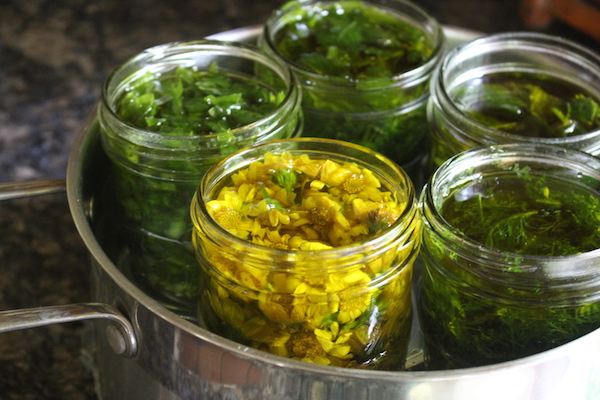
Why You Can’t Cold Infuse Fresh Herbs in Oil
Fresh herbs contain water—and water and oil don’t mix. When you seal fresh herbs into a jar of oil without heat, you’re essentially creating a low-acid, low-oxygen, high-moisture environment, which is the perfect breeding ground for spoilage organisms, mold, and even botulism.
Clostridium botulinum spores are commonly found in soil, especially on low-growing herbs. In an anaerobic (oxygen-free) oil environment, they can produce botulinum toxin without any visible signs. That’s why fresh herb oils must be made with heat and labeled for external use only.
If you want to make herbal oils for internal or culinary use, use only dried herbs and follow proven food-safe procedures.
Fresh herbs in oil work just fine for cuts, scrapes and burns on you skin. Some herbs (like St. John’s Wort) are only effective when infused fresh, as they lose potency when dried. They’re perfectly fine to use on your skin when made properly, just don’t cook with them or use them in lip balms.
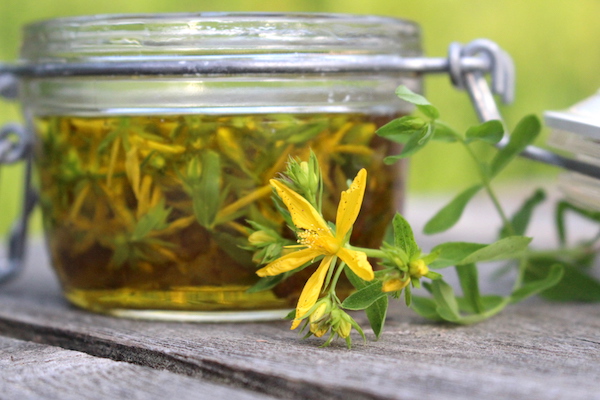
Shelf Life and Storage
Properly prepared infused oils made with dried herbs will last about a year when stored in a cool, dark place. Oils made with fresh herbs should be stored in the refrigerator and used within a few months.
You can extend shelf life by adding a few drops of vitamin E oil as a natural preservative. It’s great for your skin, and it helps keep oil from going rancid in storage.
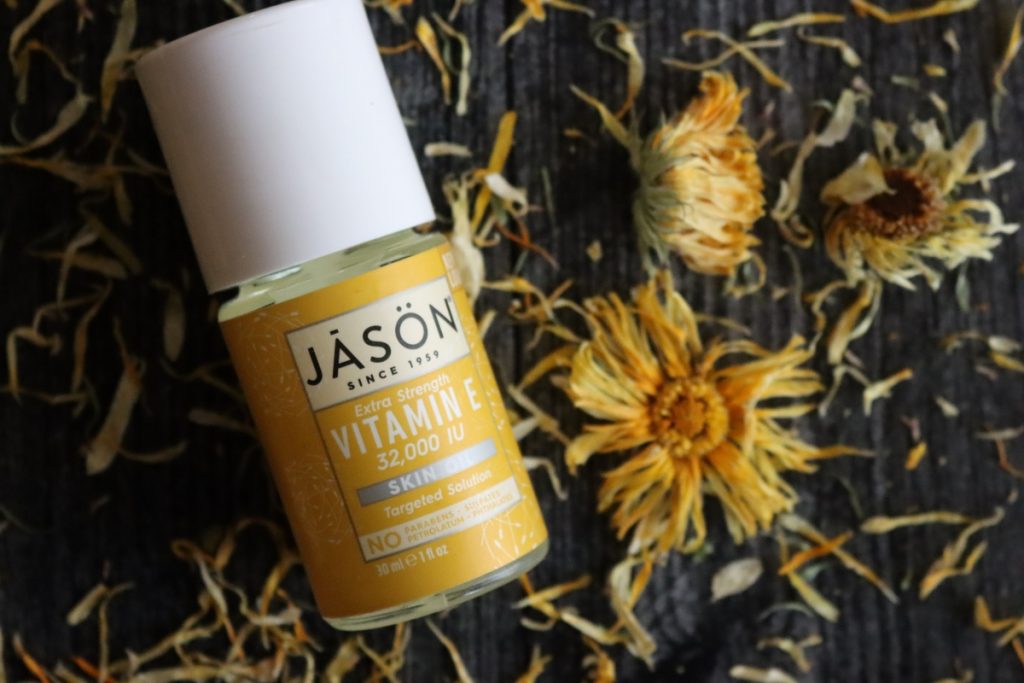
Using Herbal Infused Oils
There are endless ways to use your homemade herbal oils:
- As-is for skin care or massage
- Blended with beeswax to make salves
- Added to homemade lotions or creams
- Mixed with sugar or salt for bath scrubs
- In earache drops (like mullein and garlic oil)
Once I have a herbal infused oil, my favorite way to use it is in a homemade herbal salve. A salve is just a herbal oil thickened with a bit of beeswax (or carnauba wax if you’re making a vegan salve). They’re easy to store and use, and beeswax is great for skin too.
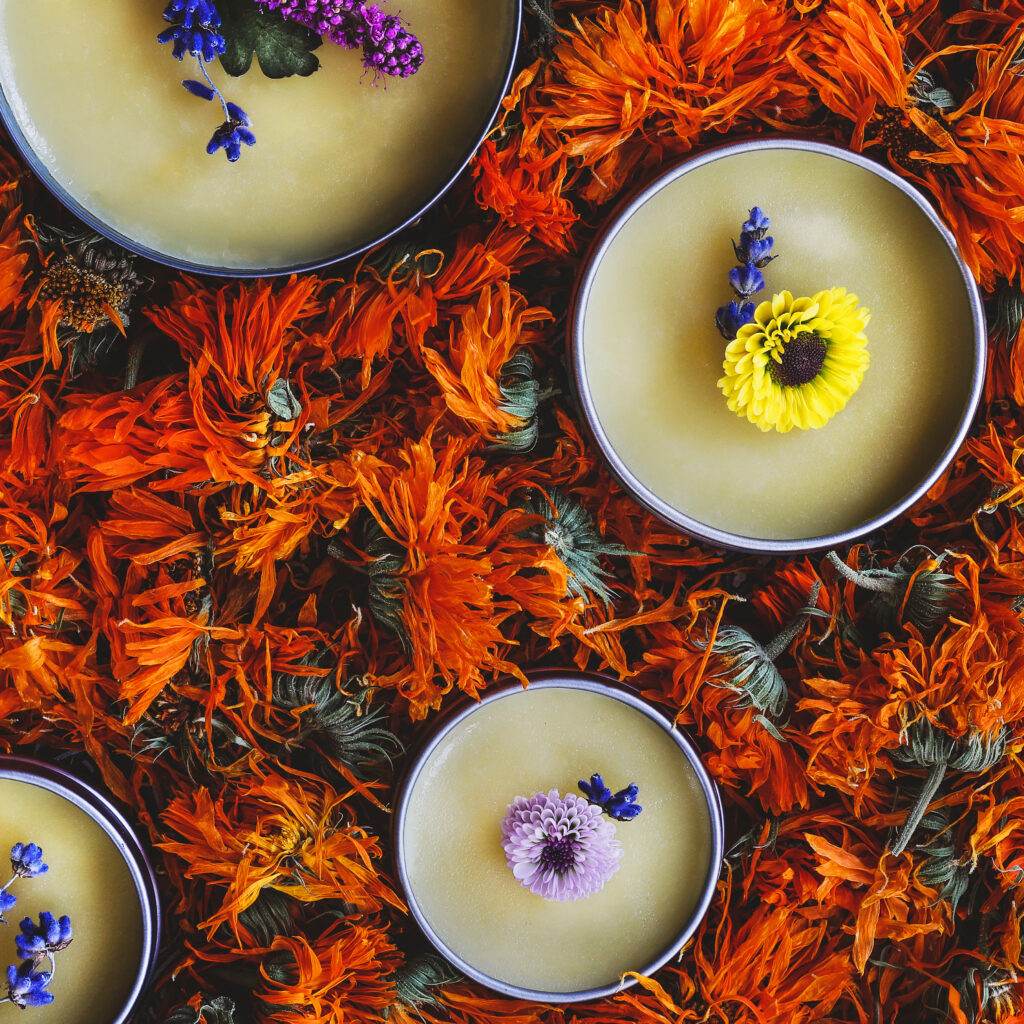
Just be sure to match the herb and oil to the intended use—and always label your creations clearly.
Making your own herbal infused oils is one of the most empowering things you can do as a home herbalist. It doesn’t take fancy equipment, just a little time, care, and intention. Whether you’re stocking your first aid kit or making gifts for friends, there’s something satisfying about capturing the essence of a plant and turning it into something that heals.
So what are you infusing first?
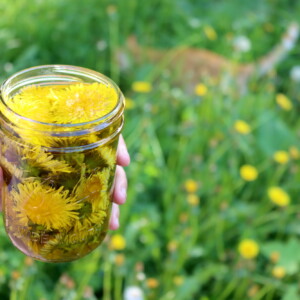
Herbal Infused Oil
Equipment
Ingredients
- 1 cup dried herbs such as calendula, lavender, comfrey, or arnica
- 1½ to 2 cups carrier oil olive oil, jojoba, sweet almond, or grapeseed
- Optional: ½ tsp vitamin E oil as a natural preservative
Instructions
- Place dried herbs in a clean, completely dry glass jar. Lightly crush with your fingers or a mortar and pestle to increase surface area. Cover with oil until herbs are submerged by at least 1 inch. Leave 1 inch headspace. Stir to release air bubbles and cap tightly.
- Infuse on a sunny windowsill for 3 to 6 weeks, shaking occasionally. For a quicker infusion, use gentle heat (see notes). Once the oil is well-scented and deeply colored, strain through cheesecloth or a fine mesh sieve. Squeeze well to extract all oil. Store in a tightly sealed jar in a cool, dark place.
Notes
Storage: Up to 1 year at room temperature
Use: For external use only when working with fresh herbs Quick Infusion: Speed up the process by warming the oil gently at 100°F for 24–48 hours using a yogurt maker, dehydrator, or Instant Pot on the yogurt setting. For urgent remedies, infuse at 120°F for 4–6 hours, but note that higher heat may degrade delicate compounds. Using Fresh Herbs: Fresh herbs contain water, which can cause infused oils to spoil or ferment. If using fresh herbs, wilt them for 12–24 hours to reduce moisture, then use the quick heat method. Botulism Risk: Because oil creates an oxygen-free environment, fresh herb infusions are not safe for internal use. They should only be used externally, and not on the face or in lip balms. Dried herbs, on the other hand, don’t contain moisture and infused oils with dried herbs can be used in lip balms and in cooking.
Frequently Asked Questions
No, herbal infused oils and essential oils are very different. Infused oils are made by steeping herbs in a carrier oil to extract their beneficial properties over time, resulting in a gentle, diluted product that can be used directly on the skin. Essential oils, on the other hand, are highly concentrated plant extracts obtained through steam distillation or cold pressing. They are extremely potent and usually require dilution before use. While infused oils are ideal for everyday topical use and homemade salves, essential oils are used more sparingly and for more targeted aromatherapy or therapeutic applications.
Yes, but with caution. Fresh herbs contain moisture, which can cause the oil to spoil or ferment if infused slowly. To reduce the risk, wilt fresh herbs for 12–24 hours to remove excess moisture and use a quick heat infusion method. Fresh herb oils should be refrigerated and used within a few weeks. They are for external use only due to the potential risk of botulism in low-oxygen oil environments.
Olive oil is the most commonly used carrier due to its shelf stability and skin-friendly properties. Other good options include jojoba oil (great for facial applications), sweet almond oil (light and absorbent), and grapeseed oil (non-greasy, good for massage oils). Choose a carrier oil that fits the intended use and skin type.
For traditional slow infusions, steep dried herbs in oil for 3 to 6 weeks in a warm, sunny window. For quicker results, use a gentle heat source to infuse for 24 to 48 hours at 100°F, or 4 to 6 hours at 120°F if needed urgently. Avoid high heat, which can damage the medicinal properties of the herbs.
This often happens when fresh herbs are used and moisture wasn’t adequately removed. Spoilage can occur if the oil isn’t stored properly, or if moisture was introduced during infusion. Discard any oils that develop mold, foul odors, bubbling, or cloudiness.
Herbal infused oils made with dried herbs and stored in a cool, dark place will generally last about a year. Adding a small amount of vitamin E oil helps extend shelf life. Oils made with fresh herbs should be used within a few weeks and stored in the refrigerator.
Infused oils made with dried herbs in a clean, shelf-stable carrier oil may be safe for culinary use depending on the herb. However, oils infused with fresh herbs should never be consumed due to the risk of botulism. Always research the specific herb and preparation method before ingesting.
Yes! Herbal infused oils are ideal for external use and can be applied directly to the skin for moisturizing, massage, or first aid. Many herbalists use infused oils as the base for salves, creams, and other topical remedies.
Absolutely. Herbal infused oils are often used as the base for homemade salves, lotions, balms, and soaps. Once strained and shelf-stable, simply combine your infused oil with beeswax (for salves) or emulsifying agents (for lotions) to create your own natural skin care products.
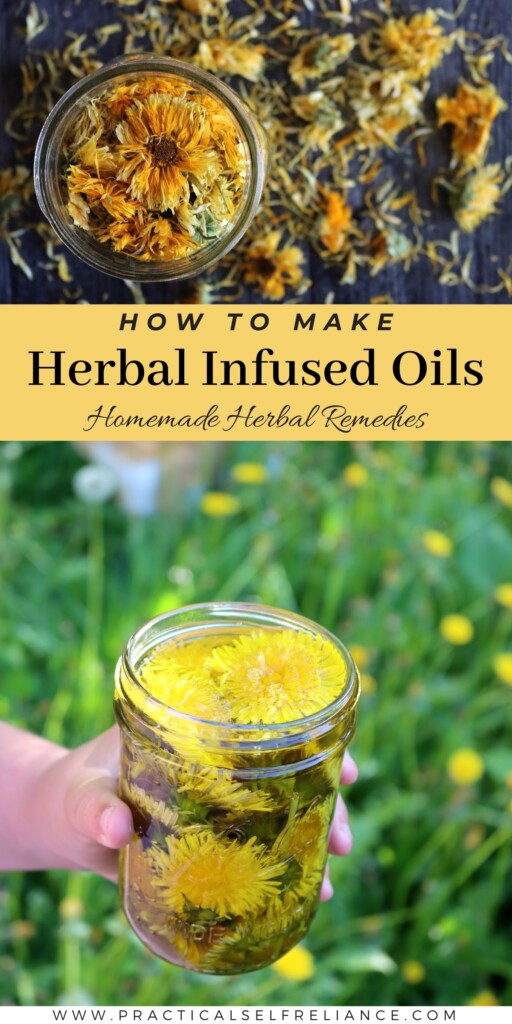
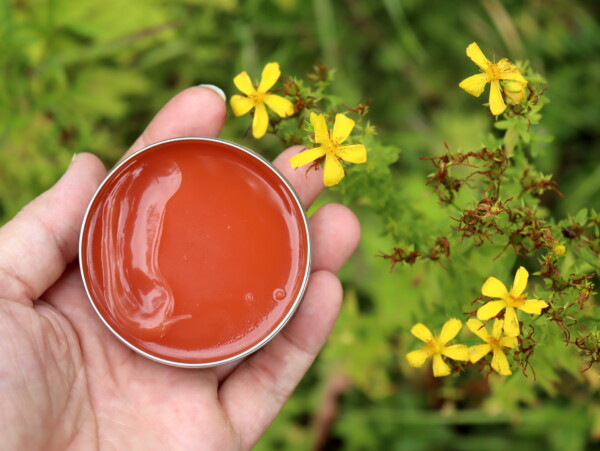
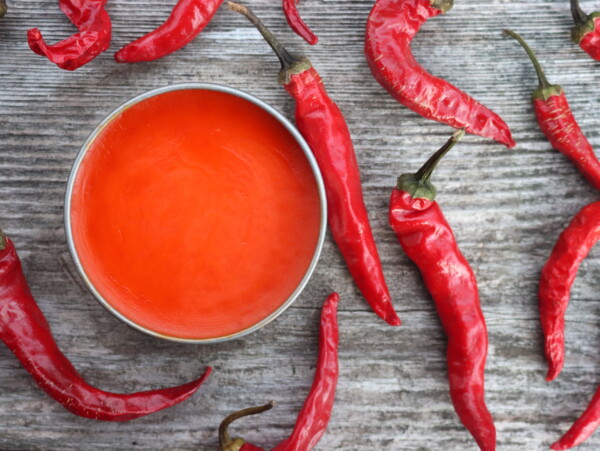
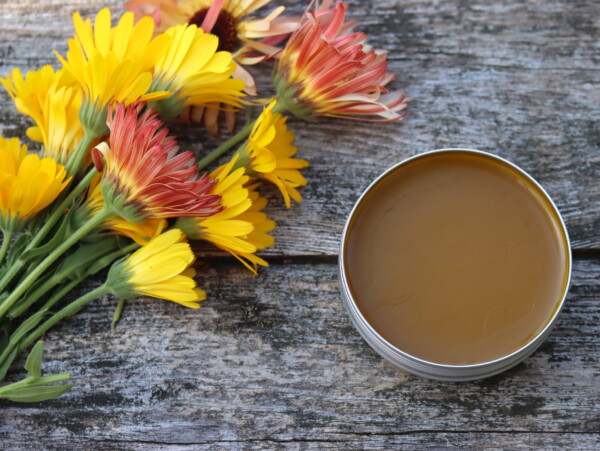
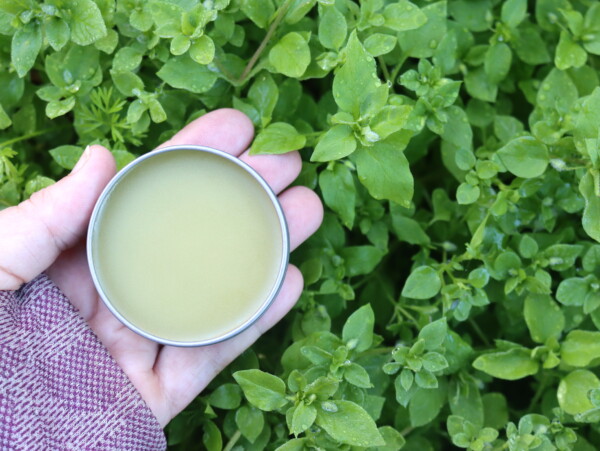
Thanks for your page it was useful
So glad it’s helpful to you!
Hi Ashley,
Recently, the Levo brand of oil infuser machines have become popular to make all sorts of infused oils. I’m wondering if you have tried this machine and how it compares to your ways? We have one of these machines but I haven’t used it for making herb infused oils. That said, how do you feel about MCT oil?
Is this like a Magic Butter Machine?
I’m new to using an Instant Pot. In what I’ve read, the yogurt setting on the Instant Pot defaults to 8 hours. In your article here, it states… “Or, do what I did and use your instant pot filled with water on the yogurt setting. Regardless of what you choose, keep the herbs at around 100 degrees for about 48 hours.” Can I set the Instant Pot to 48 hours somehow? If herbs need 100 degrees for 48 hours, I’m not understanding how to use the Instant Pot on the yogurt setting if the Instant Pot only runs for 8 hours.
You can always alter the time on the Instant Pot after you set it to yogurt. Depending on how high the time will go on your Instant Pot, you can always reset it again for an extended period of time.
Hi Ashley. In your instructions for the quicker method when you said 100 degrees is it Fahrenheit or Celsius? Thank you.
That would be Fahrenheit.
Thank you. I’ve made a yarrow salve from your recipe – what an amazing product!!! I highly recommend to have it. My mom had some itchy spot on her leg for years, she doesnt know what is that neither doctors so decided to try my salve and she said it worked miracle. Thank you so much for sharing your knowledge!
That’s wonderful. Thank you so much for sharing.
Hi Ashley,
I would like to make a plantain infused oil with Rosehip oil. Would this be permitable? I am reading that oils to be used need to be neutral. How does Rosehip oil rank on the neutral scale?
I have the rosehip oil on hand and would prefer to use what I have as opposed to purchasing more product.
What are your thoughts on this?
I can definitely understand your desire to use up what you already have on hand but rosehip oil typically isn’t a good choice for infusions. If you are wanting to use it, I would infuse the herbs in another oil and then just add the rosehip oil it that infusion once it’s finished to get the added benefits of the rosehip oil.
Thank you for that suggestion.
I was thinking Apricot Seed Kernal oil, would this one be okay, you think?
Yes, that would be a good option.
Hi Ashley, I just thought I’d pass this on, Perhaps you’ve already tried this but just in case: I was making some Balm of Gilead cream which requires Bees wax. It melts much quicker if the wax is composed of small beads, however I only had hard blocks of it so I used my wife’s cheese grater to reduce the wax to small pieces. It worked fine but as a note, it is hard to clean off the grater even with a dishwasher which by the way may not be the best idea as it could eventually coat & clog the drain system since the wax needs really hot water to remain liquid. As soon as the water cools a bit it congeals. I suggest using a dedicated grater if you need to use one, that way you don’t necessarily have to wash it every time you’re done. A heat gun can melt the excess wax off which can be saved if there is any amount. .
I would like to use Caster Oil as a carrier for a salve .
Do you know anything about the use of castor oil as a carrier?
I believe that would work just fine.
I wouldn’t infuse it in the sun, as the uv rays will damage the oil. An herbalist I follow suggests a dark box and she wraps seed heat pads around the jars with a temp gauge to keep it around a hundred degrees.
Thank you for your feedback. There are many different ways to make an herbal infused oil. It’s always great to explore new methods and then choose what works best for you. Herbalists have been using the sun for oil infusions for a very long time and it is a super simple way to still get great results.
If making the arnica oil, how do y9u now how strong it is?
As with any homemade remedy, there’s no standard concentration, so you won’t.
Hi Ashley – Thanks so much for this post! In using the instapot to infuse, did you use the trivet under the jars? Thank you, kk
Yes, you need to use some kind of trivet under them, like the one that comes with the instant pot, or the several metal bands from canning jars all lined up on the bottom to suppor them away from the direct heat.
Yes, you need to use some kind of trivet under them, like the one that comes with the instant pot, or the several metal bands from canning jars all lined up on the bottom to support them away from the direct heat.
Could these oils be used in an oil diffuser?
They’re not essential oils, so they won’t work in an electronic essential oil diffuser, which seem to be what everyone’s using these days. I have used a few drops in a tea light diffuser, but you need to first fill the top of the diffuser bowl with water, and then add the infused oils like you would add essential oils. That way, you’re making a hydrosol and slowly diffusing it. Here’s an example of a tea light diffuser: https://amzn.to/2GUst7L
Hi, i made an infusion a lil while ago and was wondering if you might help me. I have one herb that i was only able to get in powder form. Do you have any suggestions on how to strain the infusion? Cheesecloth way too pourous and coffee filters are useless as the the powder clogs it fast (oil barely goes through it in the first place). Any suggestions would be amazing! Thank you!!
You’re right, coffee filters are too fine generally, and nothing really gets through. I have used old cloth napkins and cut up old t-shirts to use for straining. They’re less porous than cheesecloth, but not quite as fine as coffee filters. That might be a good middle ground. If that doesn’t work, depending on the herb, it might make sense to just leave it in. I’ve made a cayenne pepper salve for arthritis and I used ground cayenne and just left it in without any issues.
What herb is still in the oil, and how do you plan to use the oil?
I’m interested in the cayenne pepper salve. Please help with directions on how to make. Many thanks
You can look at this post that gives instructions on how to make an herbal salve. You may want to reduce the amount of cayenne a bit since it is a very hot herb. You may want to start off with just 1/4 cup of cayenne pepper. https://practicalselfreliance.com/herbal-healing-salve/
Loved the article. Very easy-to-follow instructions. Would sunflower oil or coconut oil be useable as the carrier oil as well? I’ve heard coconut oil is great for external use so it could be like a double-whammy if it can act as a carrier oil for the herbal infusion. 🙂
Yes, both sunflower oil and coconut oil will work. For coconut oil, I’d say use the warmed infusion technique to keep the oil liquid while you’re infusing. Even the lower temp, 100 degrees or so, should be plenty to keep it liquid for infusing and for filtering out the herbs when you’re done.
you could use fractionated coconut oil as well.